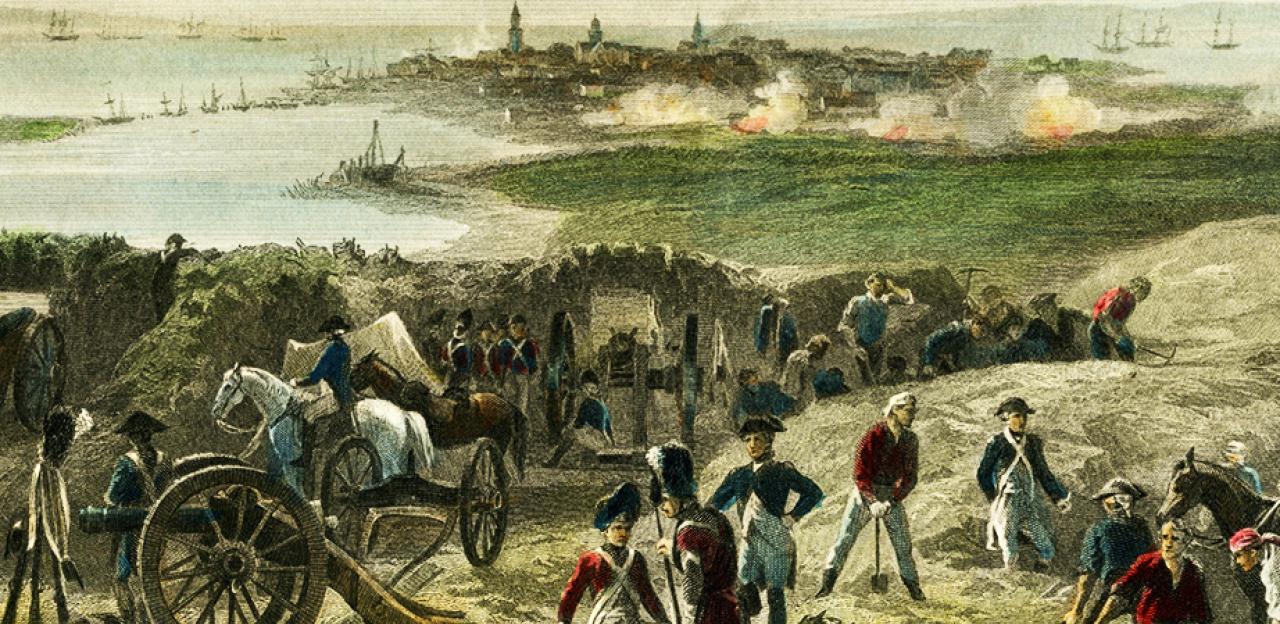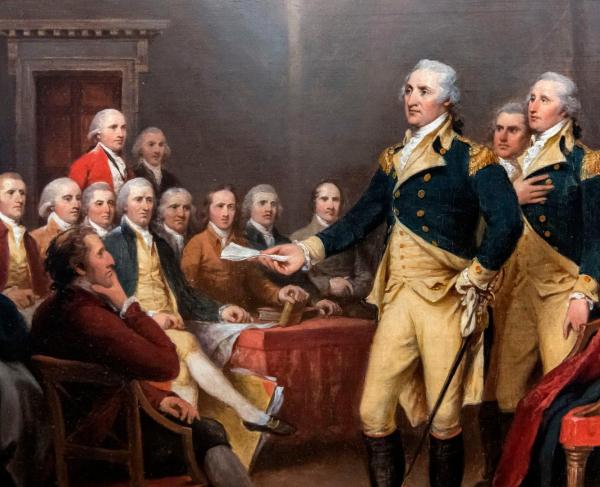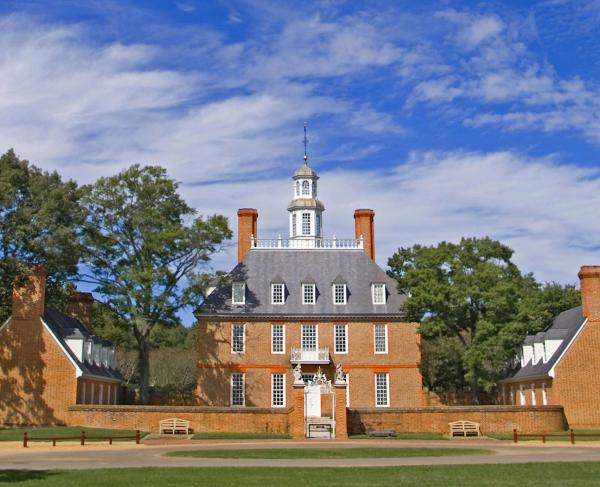Charleston

As the Revolutionary War in the Northern Colonies continued in stalemate, the military and political affairs to the south were far from amenable to the American patriots in the year 1780. In what would culminate with the largest surrender of American troops of the war, the battle and Siege of Charleston, South Carolina was a catastrophic defeat for the patriots, with more than 5,000 men surrendering their arms to the superior British force. In the wake of the British victory at Charleston, a quasi-civil war erupted throughout portions of Georgia and the Carolinas, with loyalists and patriots engaging in partisan warfare in order to settle old scores whilst competing for control.
Leaving New York City in December of 1779 with a fleet of ninety troopships, fourteen warships, and more than 13,500 soldiers and sailors, the British Commander-in-Chief in America, General Henry Clinton, sailed for Savannah and, after rendezvousing with Lt. Col. Augustine Prevost and his army quartered there, he planned to march overland for Charleston.
Patriot General Benjamin Lincoln had been laying siege to Savannah since September. For nearly a month, Lincoln’s artillery, with the support of a French fleet under the command of Admiral D’Estaing, bombarded the city day and night. With Prevost refusing to surrender, a desperate combined assault was made on the city. The assault failed and heavy casualties were incurred by the Franco-American force, with the brave Casimir Pulaski falling mortally wounded while attempting to rally the fleeing cavalry.
Lincoln was forced to abandon the siege of Savannah after D’Estaing’s fleet withdrew to the West Indies in preparation for the impending winter storms. Lincoln opted to withdraw his force of 5,000 back to its base of operations in Charleston in preparation for the coming winter and lick his wounds.
With Geneneral Lincoln all but abandoned in Charleston, Clinton, Prevost, and Charles Lord Cornwallis whose force had accompanied Clinton from New York, descended on the grossly outnumbered colonial army in Savannah beginning in early April. A series of tactical movements and minor skirmishes by the combined British armies hemmed the Colonials into the main peninsula of the city, and Lincoln, lacking the sort of tactical acumen Washington had mustered at Long Island years prior, prepared to endure a siege rather than attempting to flee and maintain his army.
To make matters worse for the defenders of the city, British warships successfully ran Fort Moultrie at the mouth of Charleston Harbor by the end of the first week of April, and thus further isolated Lincoln’s position by effectively closing off any means of escape or path of reinforcement. The noose only grew tighter as more British forces converged on the Charleston area and began to bombard the hastily prepared defensive works.
On the 21st of April a parlay was made between Lincoln and Clinton, with Lincoln offering to surrender with honor. However, Clinton refused to accept the surrender of Lincoln’s army, and the artillery bombardment resumed shortly after their meeting.
A week later, the British advanced on the left end of a canal that fronted the city's fortifications and began to drain it of water, which when completed, would open an easily accessible approach to the entrapped city. Knowing just how important the canal was for the city's defenses, Lincoln responded with steady and fierce artillery and small arms fire in hopes of driving the British away from the vital canal. By May 6th, despite the incessant fire, and a countermove orchestrated by Lincoln from the other side of the canal, the British were successful in driving the Colonials back. They drained almost all the water from the canal and rendered the city defenseless.
Two days later, on May 8th, General Clinton called for the unconditional surrender. Lincoln yet again petitioned for an honorable surrender. Unwilling to acquiesce, Clinton ordered red-hot shot fired into the city, burning several homes, before Lincoln finally called for parlay and to negotiate terms for surrender. The final terms dictated that the entire Continental force captured were prisoners of war. On May 12th, the actual surrender took place with General Lincoln leading a ragged bunch of 5,000 soldiers out of the city.
Not only was the surrender of Lincoln’s army significant in terms of numbers, but it further destabilized the area where loyalists and patriots had already been embroiled in a bloodthirsty partisan conflict. As the British remained in Charleston, they were constantly beset by guerrilla raids. Sporadic fighting occurred in scattered locations throughout South Carolina in 1781. Many of these were led by Francis Marion and Wade Hampton, who, at the Battles of Fort Fair Lawn, Colleton Castle, and Lewisfield Plantation, along with many other smaller engagements, consistently disrupted British supply and security.
On July 16, 1781, skirmishing occurred directly in front of the manor house at Lewisfield Plantation when Colonel Wade Hampton surprised a British force that had stopped there to await a paroled prisoner of war, Keating Simons, who was the owner of the plantation at the time. Hampton accompanied by his bugler fortuitously ran into a detachment of British troops at the Plantation, adjacent to the Cooper River. It was early morning and Hampton was hoping "for a breakfast and a sight, if possible, of Miss Molise Simons." As Hampton approached the rear of the house, Miss Simons frantically waved him away. However, Hampton neither saw her nor heard her warning and approached the rear door. Meeting him at the door she warned him that a British detachment of 100 men were on the other side of the house loading two boats with bounty secured by looting the area plantations. With ample time, Hampton raced back to his men on the main road and brought them to the house to surprise the British. Hampton divided his men into two groups and attacked the British from both sides of the house, to the front yard at the river. After a brief skirmish Hampton captured 78 British, removed the loot from the boats and then burned them.
The most significant British outpost between Charles Town and Camden, Fort Fairlawn protected British troop maneuvers, deployment, and communication lines through South Carolina. Involved in the British attack led by Lt. Col. Banastre Tarleton against South Carolina General Isaac Huger in the April 14, 1780, Battle for Moncks Corner as part of the British capture of Charlestown. In late August through mid-September, 1781, Fair Lawn was a key post for assembling and recovery from the Battle of Eutaw Springs. General Francis Marion, Lt. Col. Henry "Light-Horse Harry" Lee, and Capt. Wade Hampton harassed the British post in the week following the British retreat from Eutaw. On November 17, 1781, Marion's men attacked Fort Fairlawn and the nearby Colleton Castle, the fortified home of a Loyalist family, resulting in the capture of three hundred stands of arms, other stores, and 150 prisoners. Today, this earthworks redoubt is in remarkable condition with the parapet walls extending to two meters tall and surrounding moat, two meters across and one meter deep, still present.
Related Battles
5,506
258


